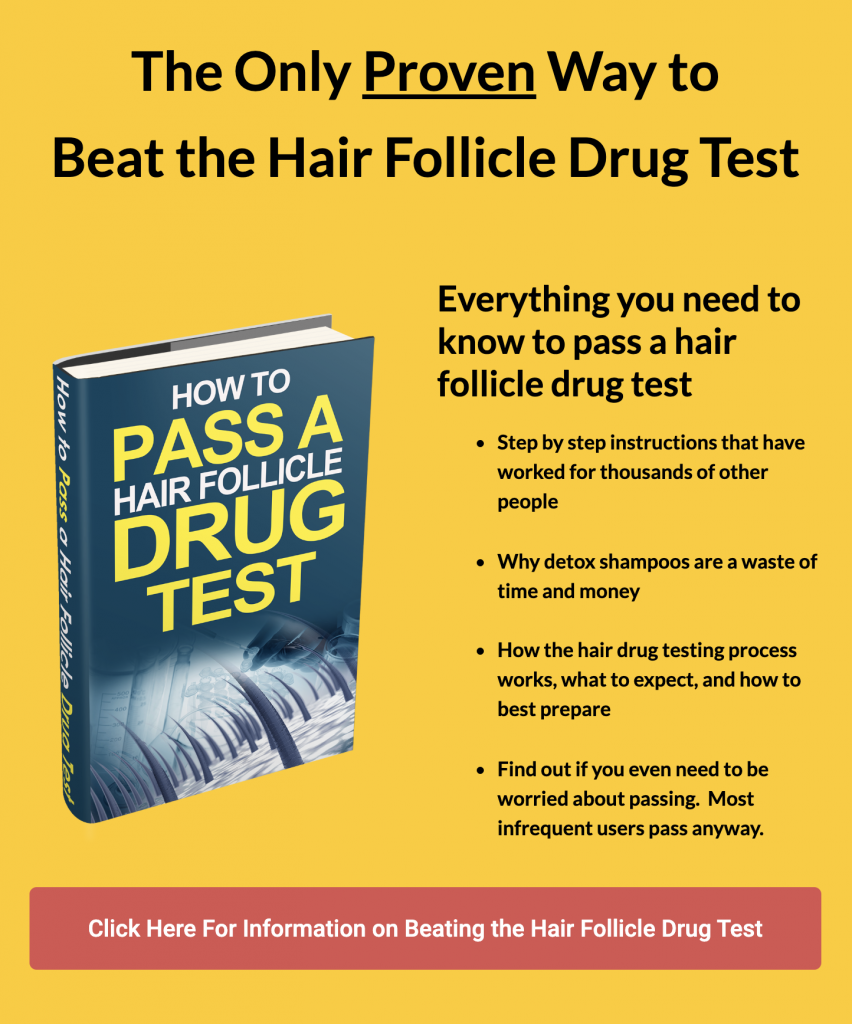We’ve long held that hair drug testing for marijuana was an inaccurate science at best. Study after study has shown that the absorption rate of THC metabolites into hair follicles is an unreliable method of determining drug usage.
Now there’s some science to back that up.

Learn How to Pass a Hair Follicle Drug Test
There is only one hair treatment method that has consistently produced "Passes" on the hair drug test and we want to show you how you can pass your test too.
Researchers at the Institute of Forensic Medicine in Freiburg, Germany, have published a report which indicates that cannabinoids found in hair follicles is usually due to cross contamination rather than via passing through the bloodstream to the hair follicle.
The test was conducted by giving test subjects daily doses of THCA and THC for a month and then measuring the amount of THC metabolites in the hair and in the blood.
They discovered that relatively little of the THC metabolites were being transferred to the hair follicles. So low were the amounts being transferred between blood and hair that they considered them to be essentially irrelevant.
The researchers concluded that the amount of THC that a person would have to be exposed to in order to test positive on a hair drug test for marijuana would be so large that people who currently test positive for THC metabolites are far more likely to be the victim of cross contamination.
It should be pointed out that the drug testing labs have, up to this point, claimed this is impossible due to the way that they extract the hair shaft for testing. Their marketing states that since they only test for THC metabolites that even direct exposure of hair with THC would not cause a positive test result.
Meanwhile the German scientists are claiming that such a small amount of THC metabolites make it into the hair shaft via the bloodstream that it would be extremely unlikely that a person would be able to consume enough THC in order to reach the threshold of detection.
THC-COOH, which is considered an incontestable proof of THC uptake according tothe current scientific doctrine, was found in hair, but was also present in older hair segments, which already grew before the oral THC intake and in sebum/sweat samples. Our studies show that all three cannabinoids can be present in hair of non-consuming individuals because of transfer through cannabis consumers, via their hands, their sebum/sweat, or cannabis smoke.
These findings could have a significant on the hair drug testing for marijuana industry and for society as a whole. These tests have been marketed and sold to the public as unbeatable and infallible. Many people have been denied jobs, denied access to their children, and even denied freedom based on the results of these tests.
While it would be unrealistic to think that hair drug testing for marijuana will be abandoned overnight and for job, custody, and criminal decisions to be overturned overnight, this could be the crack in the system that begins a much deeper look into hair drug testing for marijuana and whether or not it should be trusted as an indicator of drug usage.
This would be a major victory for people who have been unfairly subjected to this unreliable and inaccurate testing.
It should also be noted that this specific study only has implications for hair drug testing for marijuana. Other drugs were not tested and it is more generally accepted that other drugs commonly tested for in hair drug tests do cross the bloodstream to hair shaft barrier in a much easier and predictable manner.
Marijuana has always been the odd case and this is not the first scientific evidence to be published that shows that THC does not transfer to the hair follicle in a predictable manner. In fact, even the drug testing industry’s own researchers have noted that infrequent use of marijuana cannot be reliably detected due to the fact that THC does not bind well with the hair follicle.
The implication has been that while this may be true, a positive test result just indicates increased certainty of marijuana usage as a positive test result would require higher dosage and more frequent consumption of THC. In other words, a positive test result is even more sure of being positive because the test produces too many false negatives.
However, what German researchers seem to show is that the test is so inaccurate that positive test results are far more likely to be the result of cross contamination than they are from THC consumption.

